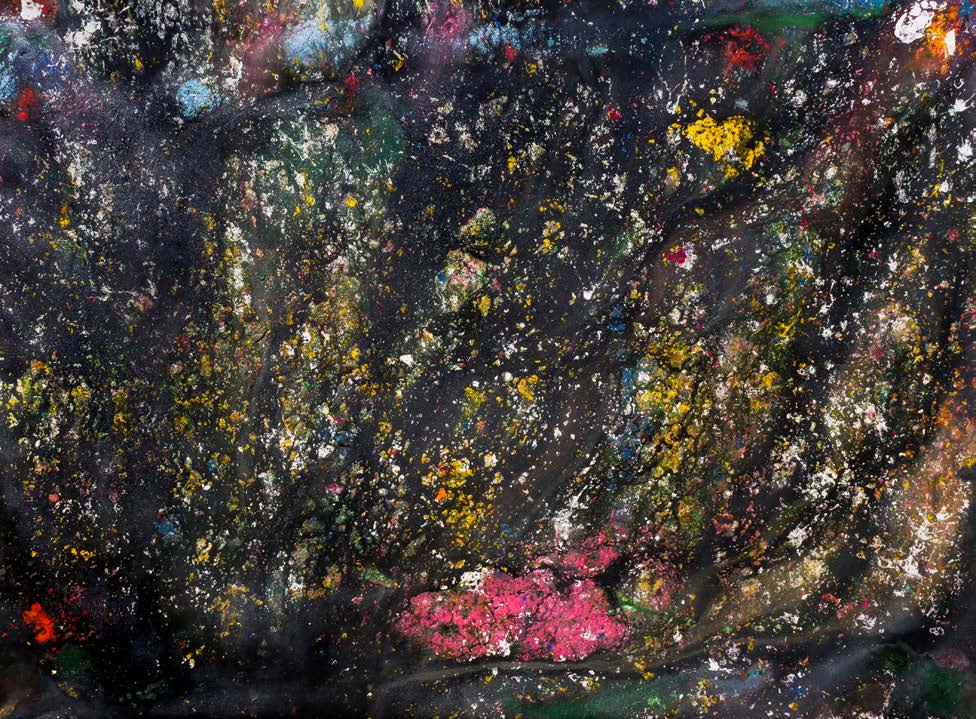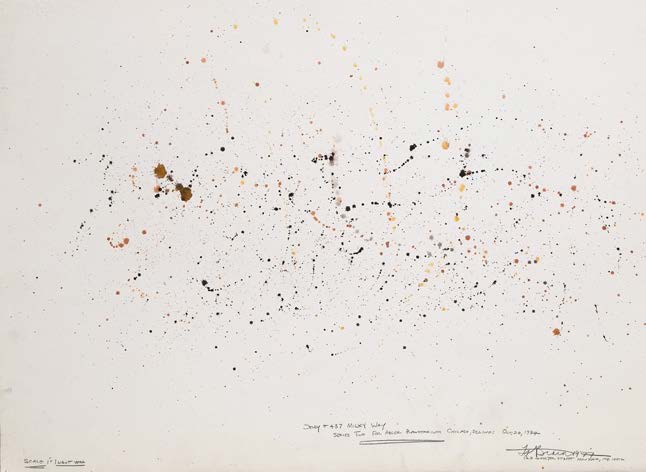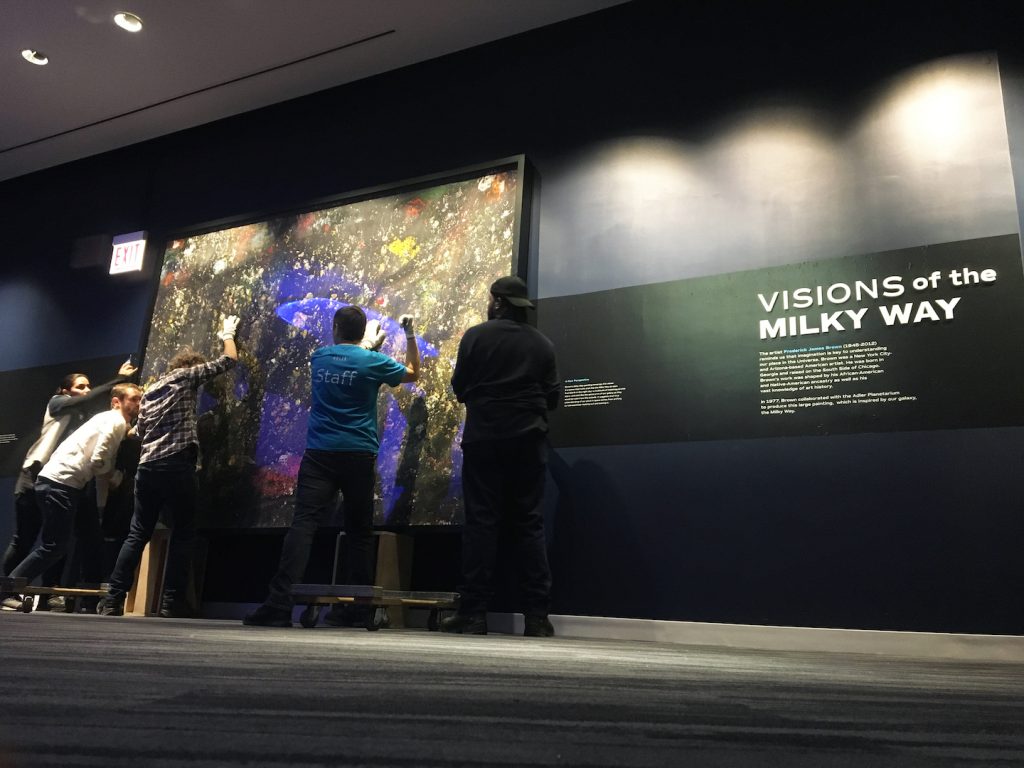The Galactic Art of Frederick J. Brown

Header Image: Frederick J. Brown, ‘Milky Way’, 1977, oil on canvas, 221 x 299.8 cm (Adler Planetarium collections).
Frederick J. Brown was a New York City and Arizona-based American artist. He was born in Georgia and raised in the South Side of Chicago. Brown’s work was informed by his African-American and Native American ancestry, as well as his vast knowledge of art history. It engages with themes such as American history and music, the urban fabric, religion, and spirituality.
The artist also nurtured an interest in astronomy and space, which he pursued in works such as “Galaxy I” and “Galaxy II” (1971), “Black Hole” (1974), and “Outer Space” (1973). In 2018, the Adler’s collections were enriched with two works of astronomy-inspired art by Frederick J. Brown (1945-2012), through the generous gift of Carolyn Doane Bowman: a painting titled “Milky Way”, and a watercolor study for this work titled “Study #427 Milky Way”.

In 1977, Brown started to work on a painting inspired by our galaxy, the Milky Way, in collaboration with the Adler Planetarium. Adler staff provided insight on the structure of the Milky Way as it was understood in the late 1970s. For further information and inspiration, Brown looked to the book The Milky Way by Bart and Priscilla Bok, a couple of astronomers who gave important contributions to the understanding of our galaxy.
By that time, the concept of the Milky Way as a spiral galaxy among billions of other galaxies, with the Sun sitting about 26,000 light years away from the galactic center in one of its spiral arms, was well established. It was only later that astronomers confirmed that the Milky Way is actually a barred spiral galaxy, meaning that the stars located in its central region form a bar-shaped feature.
Under clear skies with little or no light pollution, the Milky Way presents itself as a fuzzy, whitish strip extending across the night sky, as we look in the direction of the galactic plane. The name Milky Way originated in Ancient Greece, but this intriguing celestial feature has sparked the imagination of people across different cultures, having often been regarded as a river, a road, or some other kind of celestial pathway.

We are not able to send human beings or even machines outside our galaxy to study it, as the distances are enormous. Therefore, astronomers have had to resort to powerful observing tools, data analysis techniques, interpretative models, and observations of other galaxies, but also to a great deal of imagination in order to make sense of our cosmic abode. Brown’s take on the Milky Way as an artist thus has a strong resonance with the scientific quest to understand it.
Brown started by producing a watercolor study that challenges the viewer to search for shapes and patterns in a multitude of individual dots, something akin to what investigators of the Milky Way have been doing since, in the early 17th century, telescopic observations confirmed that it is formed by myriads of stars.
Brown’s actual “Milky Way” painting immerses the viewer in a scene evocative of the appearance of the Milky Way in the night sky, while hinting at the shape of its spiral arms as they would have been seen from outside. The painting thus highlights that, in order to figure out the shape of our own stellar system, we must switch between different perspectives. Brown’s “Milky Way” overall reminds us that imagination is key to understanding our place in the Universe, and we are thrilled that this magnificent work is on display as part of our new exhibition, Chicago’s Night Sky.







